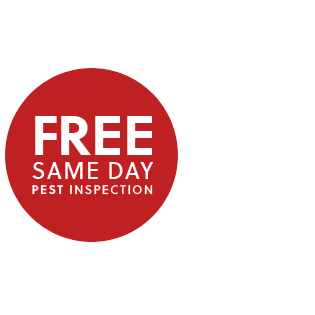How Do Pests Get Inside a House?
Pests do not start out living in your home. Their natural environment is outdoors, and they will attempt to gain access to homes in search of the three necessities of life - food, water and shelter.
How do pests like mice, ants and flies gain access to your home? Simply put, pests are opportunists and will take advantage of the smallest structural deficiencies or human action to gain entry.
Clark, California’s neighborly pest, termite and rodent control expert, understands an unwanted encounter with a cockroach in a bathroom vanity, a mouse in the kitchen pantry or bed bugs on a mattress can be unsettling for homeowners. These encounters also can create unhealthy living environments and compromise food safety.
To stop pests from gaining access to your home, Clark Pest Control has created a list of common pest entry points for homeowners to inspect and make sure pests cannot exploit. Keeping your home sealed, maintaining cleanliness, and addressing moisture issues are key steps to preventing pests from finding their way inside.
Cracks and Gaps in Walls, Windows, and Doors - Pests like ants, spiders, and roaches can squeeze through small cracks in walls, gaps around windows, and under doors. Even tiny openings can be an invitation for pests to enter.
Holes and Openings in the Foundation - Structural damage or natural wear and tear can create gaps in a home’s foundation, allowing pests such as rodents, termites, and insects to enter.
Utility Lines and Pipes - Openings around utility lines, plumbing, and electrical wiring can serve as entry points for pests. Mice, for example, can squeeze through an opening that is the size of a dime.
Vents and Chimneys - Birds, rodents, and insects can enter through chimneys, attic vents, and dryer vents if they are not properly sealed or covered with screens.
Open Windows and Doors - Leaving windows or doors open, especially without screens, is the most common way pests to gain access to a home. Rodents, flies, mosquitoes, and other flying insects often use this as an entry point. Make it a household rule to close windows and doors lest you want to invite pests inside.
Gaps Around Roof and Attic - Don’t assume pests won’t climb to new heights to gain access to your home. Unsealed gaps around the roofline, eaves, and attic can allow pests like bats, squirrels, and roof rats to enter.
Poorly Sealed Garbage Cans and Food Storage - Pests are attracted to food and waste. Improperly sealed garbage cans, compost bins, and food storage areas can lure pests inside.
Damp Areas and Water Sources - Leaking irrigation systems, standing water, clogged gutters or high humidity can attract pests like termites, cockroaches, and silverfish. These pests are drawn to moisture and may find ways to enter through gaps near these areas.
Pet Doors - Pet doors can provide an easy entry point for pests, especially if they are left open or if the flap doesn’t close securely. Pet feeding bowls or food storage containers that are left outside are a prime attractant for pests, especially mice.
Hitchhiking on People, Pets, or Items - Pests like bedbugs, fleas, and ticks can hitch a ride on clothing, luggage, pets, or secondhand furniture, entering the home this way.
Pest Control from Clark Pest Control
If you are having problems with pests gaining access to your living space, contact the experts at Clark Pest Control. Call or text Clark at 800/WE-NEED-YOU or send an e-mail at clarkcares@clarkpest.com for more information.
Until next time, the pest management professionals at Clark Pest Control thank you for helping keep unwanted pests out of your home and yard.


